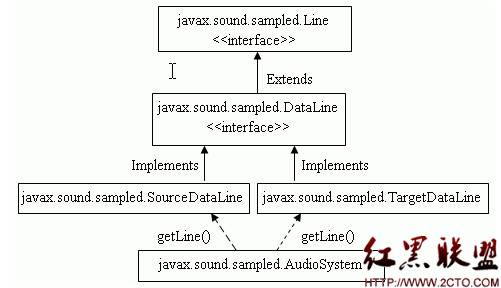CoreText实现图文混排和点击事件
本例子是实现类似于微博的富文本效果,可以实现图文混排和处理点击事件触发。使用CoreText进行图文混排的核心思想是把需要摆放图片的位置用空字符替换原来的字符,并且实现CTRunDelegate,用于动态设置空字符的高度和宽度(代表图片的大小),并且对这些空字符设置一个属性名来区别于其他CTRun,之后进行图片渲染的时候就能通过该属性来区分哪些空字符是代表图片的占位符,哪些是普通的空字符。使用CoreText处理点击事件的关键是判断点击的位置是本文内容中的第几个字符,然后通过判断该字符是否在需要处理点击事件的字符串范围内。
//创建NSMutableAttributedString,解析所有触发点击事件和替换所有需要显示图片的位置
-(void)buildAttribute{
content = [[NSMutableAttributedString alloc]initWithString:originalStr];
//创建图片的名字
NSString *imgName = @"smile.png";
//设置CTRun的回调,用于针对需要被替换成图片的位置的字符,可以动态设置图片预留位置的宽高
CTRunDelegateCallbacks imageCallbacks;
imageCallbacks.version = kCTRunDelegateVersion1;
imageCallbacks.dealloc = RunDelegateDeallocCallback;
imageCallbacks.getAscent = RunDelegateGetAscentCallback;
imageCallbacks.getDescent = RunDelegateGetDescentCallback;
imageCallbacks.getWidth = RunDelegateGetWidthCallback;
//创建CTRun回调
CTRunDelegateRef runDelegate = CTRunDelegateCreate(&imageCallbacks, imgName);
//这里为了简化解析文字,所以直接认为最后一个字符是需要显示图片的位置,对需要显示图片的位置,都用空字符来替换原来的字符,空格用于给图片留位置
NSMutableAttributedString *imageAttributedString = [[NSMutableAttributedString alloc] initWithString:@" "];
//设置图片预留字符使用CTRun回调
[imageAttributedString addAttribute:(NSString *)kCTRunDelegateAttributeName value:(id)runDelegate range:NSMakeRange(0, 1)];
CFRelease(runDelegate);
//设置图片预留字符使用一个imageName的属性,区别于其他字符
[imageAttributedString addAttribute:@"imageName" value:imgName range:NSMakeRange(0, 1)];
[content appendAttributedString:imageAttributedString];
//换行模式,设置段落属性
CTParagraphStyleSetting lineBreakMode;
CTLineBreakMode lineBreak = kCTLineBreakByCharWrapping;
lineBreakMode.spec = kCTParagraphStyleSpecifierLineBreakMode;
lineBreakMode.value = &lineBreak;
lineBreakMode.valueSize = sizeof(CTLineBreakMode);
CTParagraphStyleSetting settings[] = {
lineBreakMode
};
CTParagraphStyleRef style = CTParagraphStyleCreate(settings, 1);
NSMutableDictionary *attributes = [NSMutableDictionary dictionaryWithObject:(id)style forKey:(id)kCTParagraphStyleAttributeName ];
[content addAttributes:attributes range:NSMakeRange(0, [content length])];
//这里对需要进行点击事件的字符heightlight效果,这里简化解析过程,直接hard code需要heightlight的范围
[content addAttribute:(id)kCTForegroundColorAttributeName value:(id)[[UIColor blueColor]CGColor] range:NSMakeRange(0, 10)];
}
//CTRun的回调,销毁内存的回调
void RunDelegateDeallocCallback( void* refCon ){
}
//CTRun的回调,获取高度
CGFloat RunDelegateGetAscentCallback( void *refCon ){
NSString *imageName = (NSString *)refCon;
return 30;//[UIImage imageNamed:imageName].size.height;
}
CGFloat RunDelegateGetDescentCallback(void *refCon){
return 0;
}
//CTRun的回调,获取宽度
CGFloat RunDelegateGetWidthCallback(void *refCon){
NSString *imageName = (NSString *)refCon;
return 30;//[UIImage imageNamed:imageName].size.width;
}
- (void)drawRect:(CGRect)rect
{
//设置NSMutableAttributedString的所有属性
[self buildAttribute];
NSLog(@"rect:%@",NSStringFromCGRect(rect));
CGContextRef context = UIGraphicsGetCurrentContext();
//设置context的ctm,用于适应core text的坐标体系
CGContextSaveGState(context);
CGContextSetTextMatrix(context, CGAffineTransformIdentity);
CGContextTranslateCTM(context, 0, rect.size.height);
CGContextScaleCTM(context, 1.0, -1.0);
//设置CTFramesetter
CTFramesetterRef framesetter = CTFramesetterCreateWithAttributedString((CFAttributedStringRef)content);
CGMutablePathRef path = CGPathCreateMutable();
CGPathAddRect(path, NULL, CGRectMake(0, 0, rect.size.width, rect.size.height));
//创建CTFrame
_frame = CTFramesetterCreateFrame(framesetter, CFRangeMake(0, content.length), path, NULL);
//把文字内容绘制出来
CTFrameDraw(_frame, context);
//获取画出来的内容的行数
CFArrayRef lines = CTFrameGetLines(_frame);
//获取每行的原点坐标
CGPoint lineOrigins[CFArrayGetCount(lines)];
CTFrameGetLineOrigins(_frame, CFRangeMake(0, 0), lineOrigins);
NSLog(@"line count = %ld",CFArrayGetCount(lines));
for (int i = 0; i < CFArrayGetCount(lines); i++) {
CTLineRef line = CFArrayGetValueAtIndex(lines, i);
CGFloat lineAscent;
CGFloat lineDescent;
CGFloat lineLeading;
//获取每行的宽度和高度
CTLineGetTypographicBounds(line, &lineAscent, &lineDescent, &lineLeading);
NSLog(@"ascent = %f,descent = %f,leading = %f",lineAscent,lineDescent,lineLeading);
//获取每个CTRun
CFArrayRef runs = CTLineGetGlyphRuns(line);
NSLog(@"run count = %ld",CFArrayGetCount(runs));
for (int j = 0; j < CFArrayGetCount(runs); j++) {
CGFloat runAscent;
CGFloat runDescent;
CGPoint lineOrigin = lineOrigins[i];
//获取每个CTRun
CTRunRef run = CFArrayGetValueAtIndex(runs, j);
NSDictionary* attributes = (NSDictionary*)CTRunGetAttributes(run);
CGRect runRect;
//调整CTRun的rect
补充:移动开发 , IOS ,





